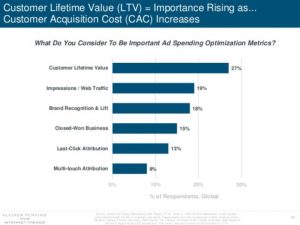— October 17, 2017
We all have that friend who refused to join Twitter, doesn’t update LinkedIn, and deleted their Facebook account. They’ve decided that social media just isn’t for them, and they don’t care that the rest of the world doesn’t agree.
They’re not listening.

That’s fine for your friend, but it doesn’t work for your business. No matter what you sell, your customers use social media. Which means you have to have a strong social presence to capture their attention.
More importantly, they may already be talking about you on social networks. And if you don’t keep track of those conversations, you’re missing out – big time.
In this post, we’re going to see how you can monitor conversations, watch your competitors, and keep customers happy – without investing bucketloads of time. Can’t wait!
So let’s start with a simple question:
What is social listening?
Put simply, social listening shows you what’s being said on social media, without you having to go looking. This lets you:
- Know what’s said about your brand in real time
- Track social media mentions on every platform
- Analyze those metrics to find trends
- Produce reports to show to clients and colleagues
It’s also known as “social media monitoring,” and the goal is make the social world a little less mystifying. You know that there are countless social media messages sent every day. On Twitter, for instance, that number is 500 million. And that’s just one social network!
Social listening lets you track all these messages – across every platform – to find the ones that matter to you.
Why is this valuable?
You may remember what it felt like when social media first broke onto the scene. You probably had a Myspace page, and you’d look at friends’ Myspace pages to see what they were up to. And to see what Tom was up to:
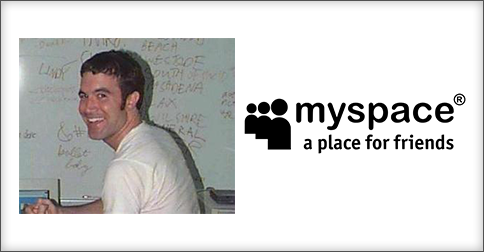
And then maybe you had a Bebo account. With two accounts, it wasn’t too hard to switch back and forward.
Things are a little different these days:
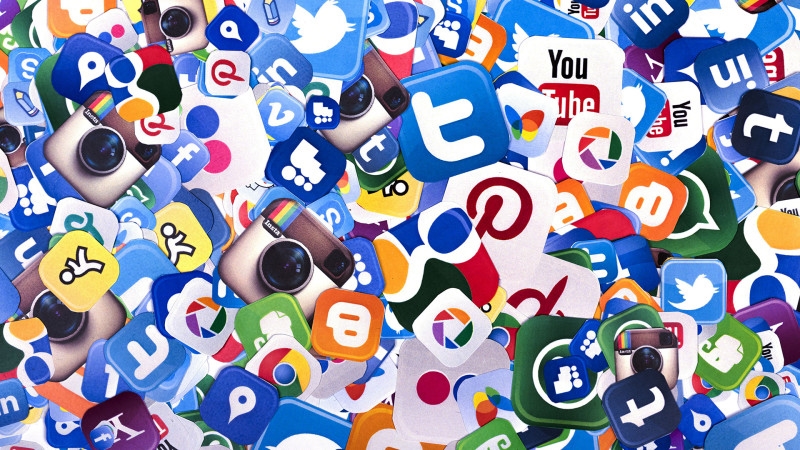
Source: Quka / Shutterstock.com
And now, social media isn’t just for chatting with friends. Every business worth a dime has a presence, and social has become a powerful sales tool. At the very least, your business needs to be there to answer customers and stay connected.
So now you’re on a handful of social networks (at least), and your clients are on even more. It’s simply not possible to know what’s being said on all of them at once, without a little help. That’s why we have social listening tools.
Social listening helps you:
Track every social channel from one place
This is really the key point. You could go from network to network searching for any mention of your brand name. But there are two problems with this strategy:
- It’s a massive waste of time
- You’re going to miss things
You’re just not going to know everything said about your brand without help. There are too many sources, too many customers, and too many voices. And when you do finally miss something, it could end up being a costly complaint from a valued customer, or an endorsement from a powerful influencer.
But you don’t have to risk it. A social listening tool picks up every mention of your brand on social media, and pulls it all into one place. That way, you can see everything said about you and save time in the process. That’s what we call a win/win.
Prevent a serious brand crisis
Social media is a fast-moving, high intensity space. It’s where things “go viral,” after all. For this reason, brands need to watch carefully for negative press. One disgruntled former staff member, or an unhappy client, can post virtually anything they like online. And if that message gains traction, you’ve gone from one person saying bad things, to thousands.
It may seem dramatic, but a brand crisis can catch you when you least expect it. And if it does, you’ll be glad that you caught it early and had a chance to limit the damage. That’s why social media monitoring should be part of any crisis management plan.
Improve your reputation online
On a more positive note, good social listening can actually help you build a stronger brand reputation online. Buyers want to know that your company listens to them, is approachable, and belongs in the modern market.
Social listening helps to make you more responsive by alerting you immediately when new messages appear. These could be questions or complaints, but they may also be opportunities for you to engage and build brand awareness. Just as you can go viral in a bad way, a witty and well-timed social media response can spread like wildfire.
Provide better customer service
Stop me if you’ve seen this sort of thing before:
I just got the Samsung galaxy s8 in July and I HATE the camera quality! All my pictures are blurry
— Angellll (@angelfacex3) September 15, 2017
A whole conversation taking place on Twitter, and nobody tagged Samsung directly. Chances are, this is an issue that Samsung can fix. Act quickly, and they may be able to sort everything out and build some serious loyalty with this customer.
Social listening picks up messages where people haven’t tagged your account directly. You can then help customers proactively, without them having to use your official support channels.
Collect feedback about your products
You need to care about what buyers think of your products and services. I’m sure that’s obvious. And you’ve probably noticed that people tend to share their thoughts about everything on social media.
While that can be frustrating, it’s also a great place to find honest feedback about your brand.
No surprise that Macy’s is going out of business. Worst customer service and shoe depts a mess. #formermacysshopper
— Kathy Groob (@kathygroob) October 7, 2017
Still don’t have the bixby update on my Galaxy s8 that lets me disable bixby. Seriously most annoying thing about this phone
— Mark Guim (@markguim) September 18, 2017
Start paying attention to what people say about you when it’s not to your face. It can be tough at times, but you’ll learn a lot about your own business.
Most of the above might be technically possible without a social listening tool. But it’s going to cost serious time, which translates directly into money for your business. In the end, the small amount you pay for a good social listening tool justifies itself by the time it saves, and the peace of mind in knowing that you won’t miss anything important.
I want to give you a lightning-quick introduction to social listening strategy. This should give you some ideas to get started, and cover all the most important aspects.
Here it is in six steps:
1. Identify your goals
As with most business strategies, it’s important to know why you’re investing in it. Here at Mention, we don’t take on new customers until they have a firm gameplan and a real need for our service. Otherwise, they’re going to be unhappy, even if we did nothing wrong.
So what do you want to achieve? The most common uses for social listening include:
- Brand monitoring: to know what people say about you in real time, and respond however necessary.
- Competitive analysis: to know what people say about your competitors, to study their marketing strategies, and “borrow” their best ideas.
- Influencer marketing: to find powerful people to share your brand name and build awareness on social media.
- Crisis management: to anticipate and mitigate bad social media crises. The real time aspect of social listening is especially valuable here.
- Customer service: to be able to find customers with problems and help them immediately, to keep them happy.
Naturally, your goals may involve a little of each. But you need to be clear on them before you start, or else you’re likely to be disappointed.
Social listening isn’t some magical panacea for a struggling brand; it’s gives you the information you need to act on your strategy. But first you need the strategy.
Once you have that, it’s time to get to work.
2. Find the right tool
It should hopefully be clear that social listening isn’t possible without a good social listening tool. So if you’re going to give this strategy a try, you’ll need to start shopping around.
I’m not going to tell you which to choose, since I’m clearly biased. But I would only choose a social listening tool that offers the following:
- Data from every social media platform that matters to you
- Good analytics features to help you assess that data
- An easy-to-understand interface
- The ability to respond to messages from within the app
I’d also look at reviews, and try to find clear evidence that the tool does what it says it does. In particular, you want to know that it’s not going to miss important comments online. This isn’t always guaranteed.
And of course, you’re going to have to think about price. There are some free tools out there that offer something like a social listening service. But if you want to really make the most of your social listening, they’re just not going to cut it.
The good news is that most of them offer a free trial or testing period. So try a few out, see which suits you best, and go for it!
3. Choose your keywords
Now we’re getting into the nitty gritty. Social listening is heavily dependant on keywords; we’re basically tracking these terms all over social media. So choosing the right words is essential.
Again, this comes back to your goals. Do you want to track your brand name, your products, or your competitors? How about find influencers or learn more about your industry?
This can also be tricky for companies with ordinary brand names. “Apple,” for instance, is a pretty tough one to track. You don’t know whether people are talking about the brand, the fruit, or the daughter of Chris and Gwyneth. But you can combine this with other keywords to narrow down your search:
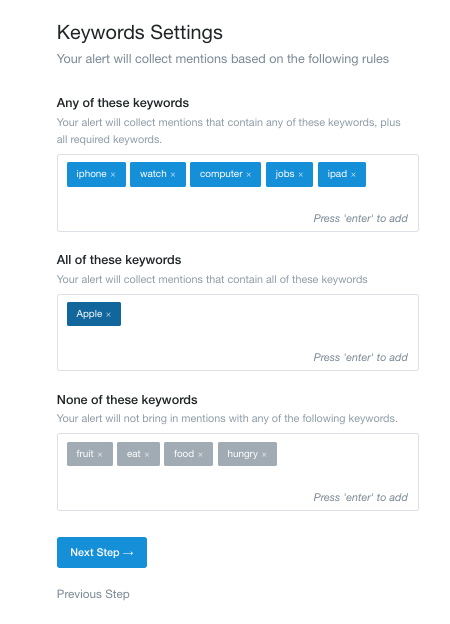
It may also be smarter for brands like these to focus on their products, and not their name overall. iPhone, iPad, and Apple Watch are all much simpler to hone in on.
You also need to think about how much “noise” you want to collect. While it might seem exciting to gather tens of thousands of mentions per day, it may be difficult to actually do anything useful with them. You certainly can’t respond to all of them!
The smarter approach is to cast a narrow net, and only collect the mentions that really interest you. Boolean alerts are perfect for this, as you can pinpoint phrases and put limits on your keywords, so that only the most relevant return. If that sounds good, check that the tool you’re considering offers Boolean.
4. Actually do some “listening”
Hopefully, you’re excited about this part. This is the reason you invest in social listening, to track your brand and see what people are saying.
You need to set aside some time to see what’s coming in. But again, this will depend on your goals. Let’s tackle each quickly:
Brand monitoring
Your goal here is to know what people say about you, to better understand your customers and prospective buyers. So you need to read these social comments and find out!
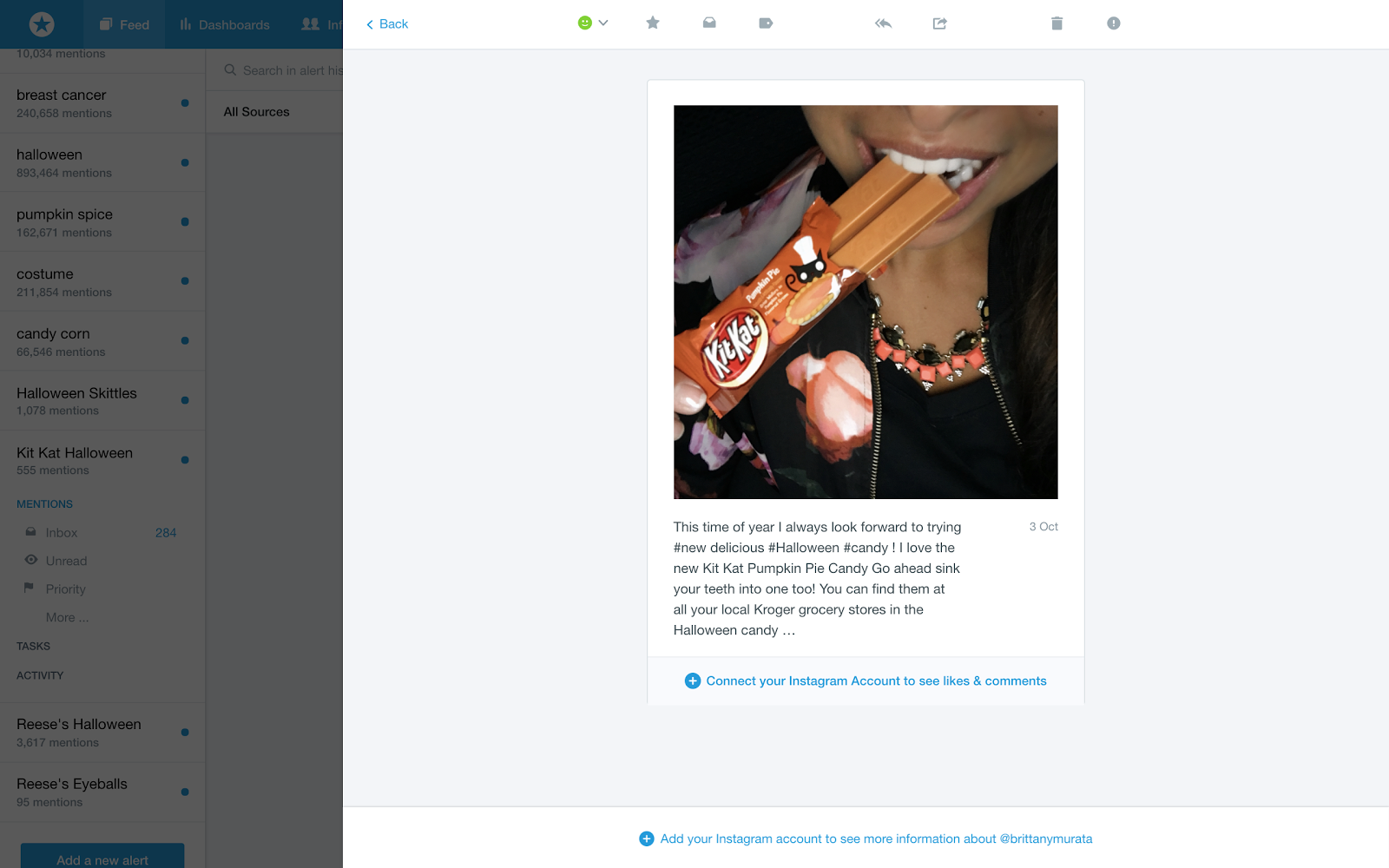
Set aside a little time each week to look over your mentions and see what matters to people. And if you’re in the middle of a crucial business period – say, a product launch – you’d better make that a little time each day.
Competitive analysis
A good social media competitive analysis takes as little as five minutes. You don’t need to study the competition as closely as your own brand. But this is a great way to get new product ideas, improve your marketing strategy, and learn from your opposition.
Check in once a week to see their most-shared content, their latest product updates, and spot any news coverage they’ve received. Sentiment analysis also lets you see their most common complaints, which is a great way to find out what not to do.
Influencer marketing
We’ve written a boatload of content about how to build the best influencer strategy. Social listening is part of this; it lets you find people already talking about you, with the most influential at the top of the list.
Look for important voices talking about your brand and try to make a connection. You can also watch for those same voices talking about your competitors, and try to understand why they prefer the other company.
Crisis management
It’s always interesting to make crisis management part of a strategy, because it’s something you never hope to actually use. Unlike the others in this list, you won’t set aside a specific amount of time for crisis management.
Instead, create an alert for specific keywords that you know are damaging. Something like this:
[Brand name] + [“faulty” OR “fail” OR “dangerous” OR ” hate”]
If you’re a Mention user, Pulse alerts will then tell you when this alert suddenly receives a spike in mentions, and you’ll know you need to react quickly.
Customer service
If you want to provide excellent customer service, you’ll need to have someone keep a close eye on your monitoring tool. The good news is your account can have as many users as you need, so why not give your customer support people a day when they’re “on call,” and encourage them to respond to queries as quickly as possible.
5. Respond in real time
I mentioned above how important it is to have a social listening tool that works in real time. The reason? To make the greatest impact on social media, you need to engage in conversations as they’re happening.
Is someone discussing an issue that you can solve? Reach out and help them. Did someone say nice things about your brand? Thank them for their thoughts and share them with your audience.
The more you’re able to respond to these conversations as they’re taking place, the more you build authenticity around your brand. You show that your company is built by real people who really care, which is so valuable to buyers.
6. Evaluate your performance
Good analytics tools make a big difference. When you’re collecting large numbers of mentions, it pays to be able to analyze this data. This means you want to choose a social listening tool that lets you build custom graphs and reports that match your goals.
A few key metrics that you definitely want to be able to measure:
- Sentiment around your mentions
- Share of voice (to compare several alerts)
- Social influence
- Changes in volume over time
- Languages
- Locations of people talking about you
- Brand reach
It’s even better if you can take all these metrics and put them into tailored reports specifically for your business. The less hands-on report-building you need to do, the more time you have for more important things. So if you can automate these reports completely, that’s even better:
To sum up
Social listening isn’t the one thing that’ll take your social marketing from good to great. It’s a tool in your kit – a source of information that can make a big difference.
To make it work for you, you need:
- Clear goals for what you want to achieve
- A good social listening tool
- The ability to pay attention and respond quickly
- The desire to improve your performance based on results
In the end, it’s actually not all that complicated. With a little strategy and a lot of common sense, you’re all set for success.
Digital & Social Articles on Business 2 Community
(67)

